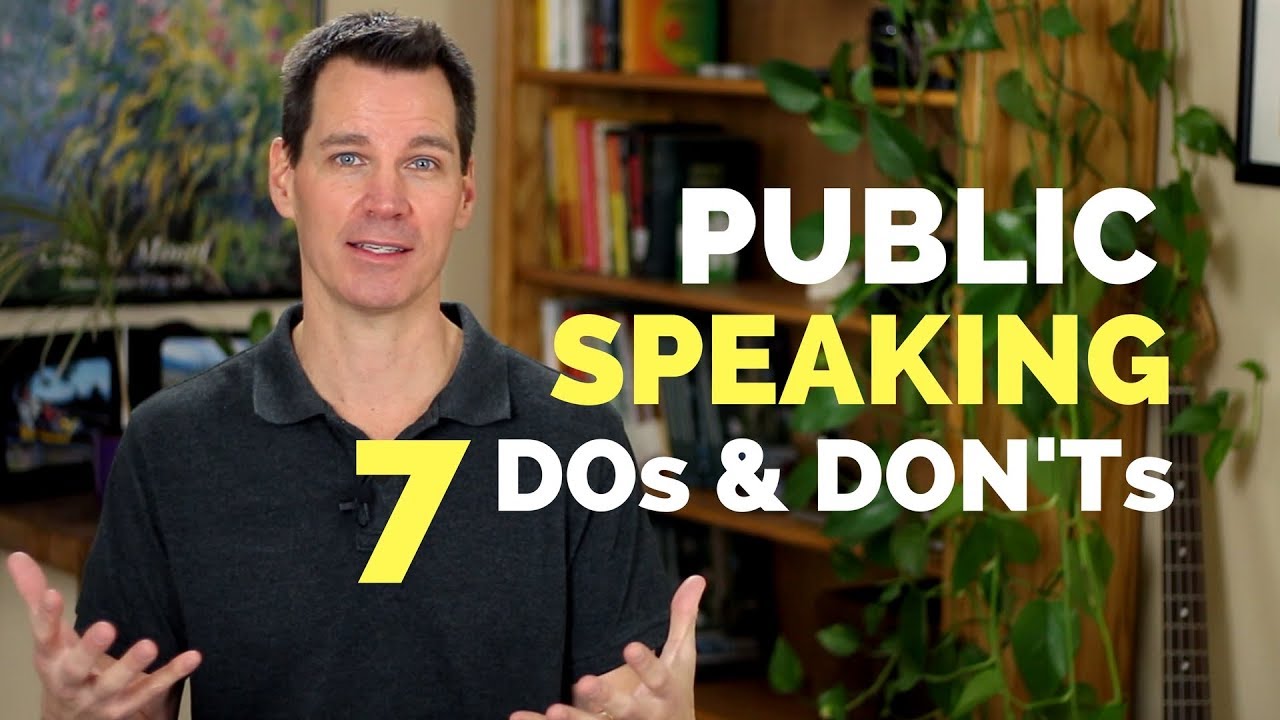As we step into 2024, public speaking trends are setting the stage for a transformative year where communication evolves dramatically. We’re witnessing a shift propelled by advancements in technology, the changing needs of audiences, and an ever-increasing demand for genuine, heartfelt engagement. Gone are the days of stiff, rehearsed deliveries; today, audiences are craving authenticity, relatability, and immersive experiences. So, buckle up as we explore the top public speaking trends reshaping how speakers connect with their audiences, both in-person and virtually.

Top 5 Public Speaking Trends Reshaping the Industry in 2024
1. Emphasis on Authenticity and Vulnerability
In a society flooded with curated perfection, speakers are realizing that authenticity and vulnerability are valuable assets. Influencers like Brené Brown have been at the forefront of this movement, encouraging speakers to share their authentic stories, struggles, and triumphs. Panicked about a hiccup in your story? Embrace it! Audiences want to see the real you, not a polished version. This trend signals a collective shift away from overly rehearsed performances toward raw, real conversations that create a sense of unity and trust with the audience.
Connect with your own vulnerabilities to foster genuine engagement. Share real-life stories that reflect your journey. When you let your guard down, you invite your audience to do the same, transforming them from passive listeners to active participants.
2. Integration of Virtual Reality (VR) and Augmented Reality (AR)
Talk about stepping it up! Brands like Microsoft and Oculus are leading the way, bringing VR and AR into public speaking. Imagine having the ability to transport your audience into a different environment during your presentation. This kind of immersive experience enhances engagement and captivates even the most distracted attendees.
For instance, virtual reality training is becoming a staple for aspiring speakers. By practicing in lifelike settings, they gain confidence and finesse, turning once-daunting speeches into opportunities for impactful connections. The integration of these technologies allows speakers to push boundaries and deliver unforgettable experiences.
3. Micro-Speaking and Bite-Sized Content
In a world of fast-paced scrolling and multitasking, micro-speaking has become a game-changer. Inspired by platforms like TikTok and Instagram Reels, speakers are learning to distill their messages into bite-sized pieces. Look at influencers like Jay Shetty, whose concise, impactful snippets captivate audiences on-the-go.
In 2024, focus on crafting presentations that deliver high-impact insights in digestible chunks. Think about starting with a bold statement, followed by a succinct story or lesson. This format keeps your audience engaged and ensures your message has the maximum effect.
4. Enhanced Audience Interaction and Engagement Techniques
Let’s face it: nobody wants to sit through a one-sided lecture anymore. In fact, dynamic interaction is the name of the game! Real-time engagement through live polling, Q&A apps, and social media integration is revolutionizing how speakers connect with audiences. Look at Simon Sinek, who effectively incorporates these tools to transform lectures into conversations.
Moving forward, personalization will be central to effective public speaking. Your audience expects to be part of the dialogue, not merely passive spectators. Find ways to invite participation throughout your presentation—ask questions, encourage responses, and make them feel valued. This creates an experience instead of just a presentation.
5. Focus on Diversity, Equity, and Inclusion (DEI)
Now more than ever, speakers are embracing themes of diversity, equity, and inclusion in their work. Voices like Chimamanda Ngozi Adichie remind us of the importance of promoting narratives that challenge dominating perspectives. By integrating diverse stories and experiences, public speaking transcends singular narratives, empowering underrepresented groups and enhancing relatability.
Make it a point to share stories from a variety of perspectives; this will not only enrich your presentation but also connect with a broader audience. Embrace the power of DEI in public speaking by creating a platform for diverse voices, ensuring every audience member feels valued.

The Rise of Hybrid Events
COVID-19 taught us valuable lessons about adaptable communication. Hybrid events are now here to stay, merging in-person and virtual audiences into a cohesive experience. Organizations like TEDx have illustrated how thoughtfully designed hybrid events can foster inclusivity, ensuring no one is left behind, regardless of where they are stationed.
For speakers, mastering the art of engaging both in-person and remote audiences simultaneously is crucial. The blend of physical and virtual elements offers speakers the opportunity to reach a global audience without geographical limits.

The Role of Data in Public Speaking
Data is no longer a buzzword; it’s an essential tool in the public speaking playbook. Utilizing analytics can elevate your content delivery. For example, audience feedback tools can provide real-time insights, helping you tailor your presentation on-the-fly. Brands like HubSpot have proven that incorporating analytics leads to higher satisfaction and engagement rates.
Regularly refining your strategies based on audience data not only enhances your effectiveness but also demonstrates your commitment to addressing their needs. The more you know about your audience, the better you can connect with them.

The Future of Public Speaking in an AI-Driven World
AI is transforming the landscape of public speaking, and it’s time to harness that power. Tools such as ChatGPT can aid in script creation, generating ideas, and even coaching delivery techniques. Those who embrace AI will stand out in a highly competitive environment, letting technology manage logistics while they focus on authentic connection.
For instance, consider exploring AI keynote Crafting to streamline your preparatory processes. The collaboration between human creativity and AI efficiency is poised to redefine how we prepare speeches in an era where effective communication is vital.

Wrap-Up: Embracing Change in Communication
As we dive deeper into 2024, public speaking trends are reshaping our communication paradigm. By committing to authenticity, leveraging technology, and prioritizing inclusivity, speakers can forge a lasting impact on audiences. Those willing to adapt will not just survive but thrive in a rapidly changing landscape.
Whether it’s through embracing engaging storytelling, integrating innovative technologies, or fostering diverse voices, the future of public speaking is bright. Take control of your speaking career today—embrace these trends, invest in your development, and leave a lasting impression on the world. Let’s step forward together into a new era of communication that captivates, inspires, and uplifts!
Public Speaking Trends Transforming Communication in 2024
The Rise of Interactive Engagement
In 2024, public speaking trends are leaning heavily towards interactive engagement. This shift means speakers are ditching the old monologue format and welcoming conversations with their audiences. How cool is it that technology allows speakers to poll attendees in real-time, turning a passive audience into an active participant? This trend aligns perfectly with the rising demand for motivational speakers on topics that resonate with people’s everyday lives, as through interaction, speakers can address what truly matters to their audiences.
Speaking of interaction, it’s fascinating how many professionals are embracing tools like the uwm canvas for organizing their presentations. These platforms not only streamline content but also enable a creative flow that captivates listeners. It’s like giving your presentation a new lease on life! Plus, as social Media branding continues to influence public perception, it’s clear that a well-curated online persona can set speakers apart, making their messages more relatable and impactful.
The Visual Appeal of Storytelling
Another noteworthy trend is the increased emphasis on storytelling, particularly in a visual format. This year, speakers are utilizing videos and imagery to enhance their messages. It’s amazing how a powerful image, like tupac’s last photo, can provoke thought and emotion, reinforcing the speaker’s narrative. Storytelling creates memorable experiences and fosters deeper connections between speakers and audiences.
But hey, it doesn’t end there! Public speaking in 2024 is also making a big splash with unique visual branding strategies, which ties back to our earlier point about the importance of social media branding. As speakers build their portfolios, they need to ensure their personal brands shine through in every presentation, incorporating eye-catching visuals and cohesive themes. The art of speaker portfolio building is vital in showcasing these abilities, drawing in diverse audiences with engaging content.
Formality Takes a Backseat
Finally, the trends transforming communication are shifting towards a more casual approach. A relatable speaker can easily resonate with diverse audiences, providing a more comfortable atmosphere for sharing ideas. Think about it: we want authenticity, don’t we? By taking a wide berth from traditional public speaking norms, speakers can create a more relaxed environment that fosters better understanding and engagement.
Moreover, as speakers step into this new era, they’re often avoiding stiff formality in favor of relatable humor and storytelling, allowing for a real connection to bloom. It’s a trend that’s shaking up traditional views on public speaking, and it’s refreshing! So, as we roll into 2024, keep an eye on these public speaking trends; they might just change how we communicate, connect, and inspire one another.

What are the 5 C’s of public speaking?
The 5 C’s of public speaking are clear, cohesive, complete, concise, and concrete. Being clear means your message is understandable, cohesive means staying focused on the topic, complete means providing all the necessary information, concise means getting to the point without fluff, and concrete means using specific words to make your point.
What are the 5 P’s of public speaking?
The 5 P’s of public speaking consist of Planning, Preparation, Practice, Performance, and Passion. Each of these steps is crucial for delivering a speech that resonates with your audience and leaves a lasting impression.
What are the 4 P’s of public speaking?
In public speaking, the 4 P’s focus on your vocal delivery: Projection, Pace, Pitch, and Pauses. Mastering these elements helps you engage the audience, avoid sounding monotone, and emphasize key points effectively.
What is the future of public speaking?
The future of public speaking looks bright, blending technology and human connection. We’re moving towards a scene where physical and virtual stages merge, AI tools help hone our delivery, and storytelling becomes an immersive experience for the audience.
What are the 7 Ps of public speaking?
The 7 P’s of public speaking include the original 5 P’s and add Purpose and Audience. Purpose keeps your message focused, while understanding your audience helps tailor your content to their interests and needs, making your speech more impactful.
What are the 3 P’s of public speaking?
The 3 P’s of public speaking typically refer to Preparing, Practicing, and Presenting. These are essential steps to ensure you’re ready to deliver a successful speech that resonates with your listeners.
What are the six rules of public speaking?
Six rules of public speaking include knowing your audience, practicing your delivery, starting strong, focusing on main points, engaging with your audience, and leaving a lasting impression. Following these rules can help boost your confidence and effectiveness.
What is the five finger model of public speaking?
The five finger model of public speaking suggests using each finger to represent a different key aspect: Know your message, Know your audience, Practice, Engage, and Evaluate. This simple model can help streamline your preparation and delivery.
What are the 3 S’s of public speaking?
The 3 S’s of public speaking are Structure, Style, and Substance. Keeping these in mind can guide you in developing a well-organized and engaging presentation that conveys your message clearly.
What is the 4S strategy in public speaking?
The 4S strategy involves Setting the stage, Sharing the story, Sustaining interest, and Summarizing key points. This approach helps create a compelling narrative that keeps your audience engaged.
What are the three 3 elements of public speaking?
The three key elements of public speaking are content, delivery, and audience engagement. Balancing these elements can help ensure your presentation is effective and memorable.
What are the 3S of public speaking?
The 3 S’s of public speaking can also refer to Speak clearly, Show confidence, and Stay engaging. Focusing on these can make your speech more impactful and appealing to your audience.
Does public speaking pay well?
Public speaking can pay well, particularly for experienced speakers, trainers, or those who work in industries where speaking is key. Earnings vary widely, but the potential for good income is certainly there.
What improves public speaking?
Improving public speaking comes down to practice, feedback, and experience. Joining clubs like Toastmasters, rehearsing in front of others, and seeking constructive criticism can all help enhance your skills.
Can public speaking be a skill?
Absolutely, public speaking is a skill that can be developed over time. With practice and the right techniques, anyone can become a more effective and confident speaker.
What are the 5s of public speaking?
The 5 S’s of public speaking are often seen as Speak clearly, Stand tall, Stay composed, Spark interest, and Summarize key points. These elements help keep your presentation focused and engaging.
What are the 5 C’s in communication?
The 5 C’s in communication are the same as in public speaking: clear, cohesive, complete, concise, and concrete. These principles apply across various forms of communication, ensuring that your message hits home.
What are the 5 C’s explained?
The 5 C’s explained include being clear with your ideas, cohesive in structure, complete with supporting information, concise in delivery, and concrete in language to make your points resonate effectively.
What is the key elements of the 5 C’s?
The key elements of the 5 C’s are clarity, cohesiveness, completeness, conciseness, and concreteness. By focusing on these, you boost your communication effectiveness and enhance audience comprehension.









